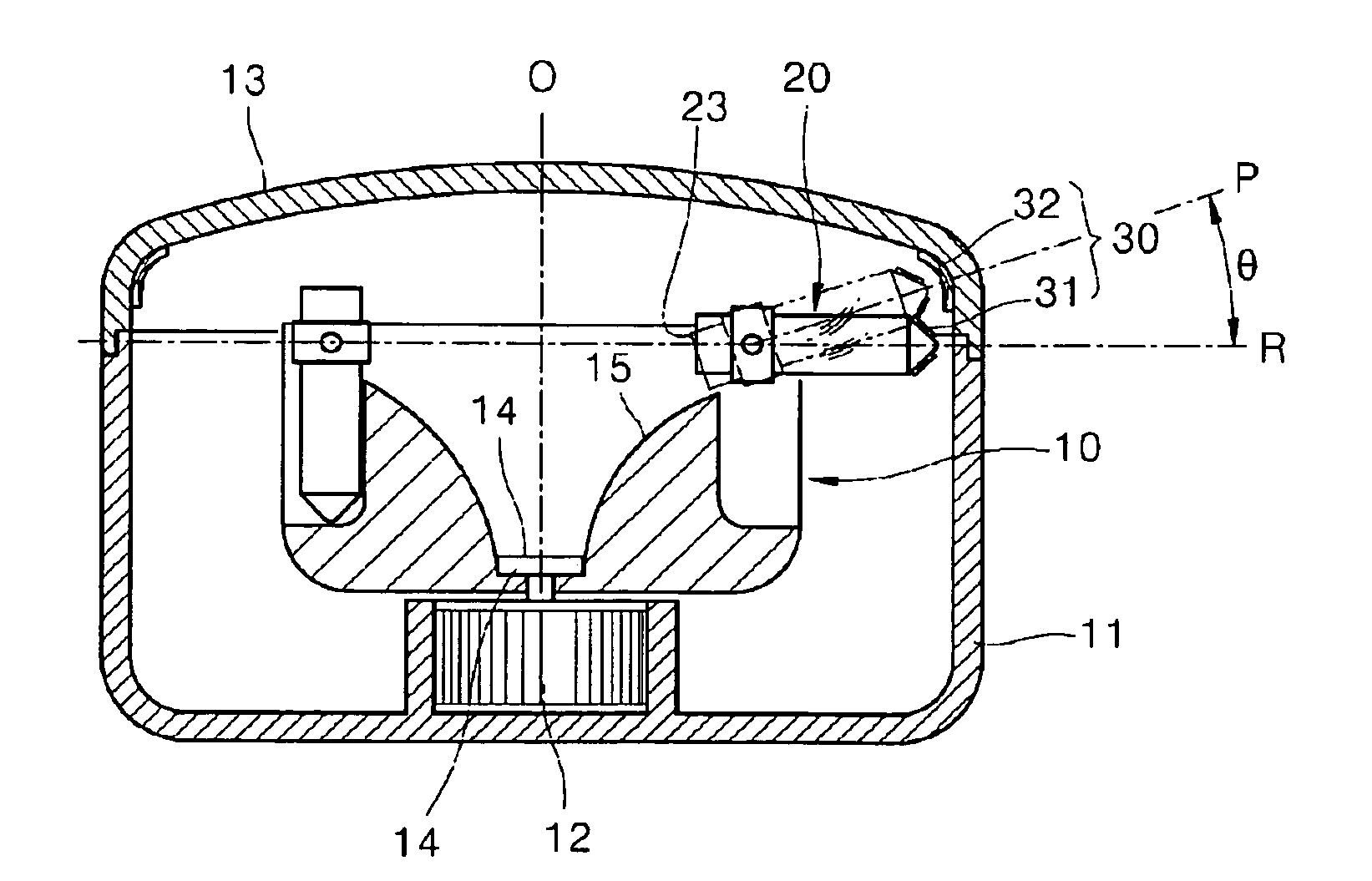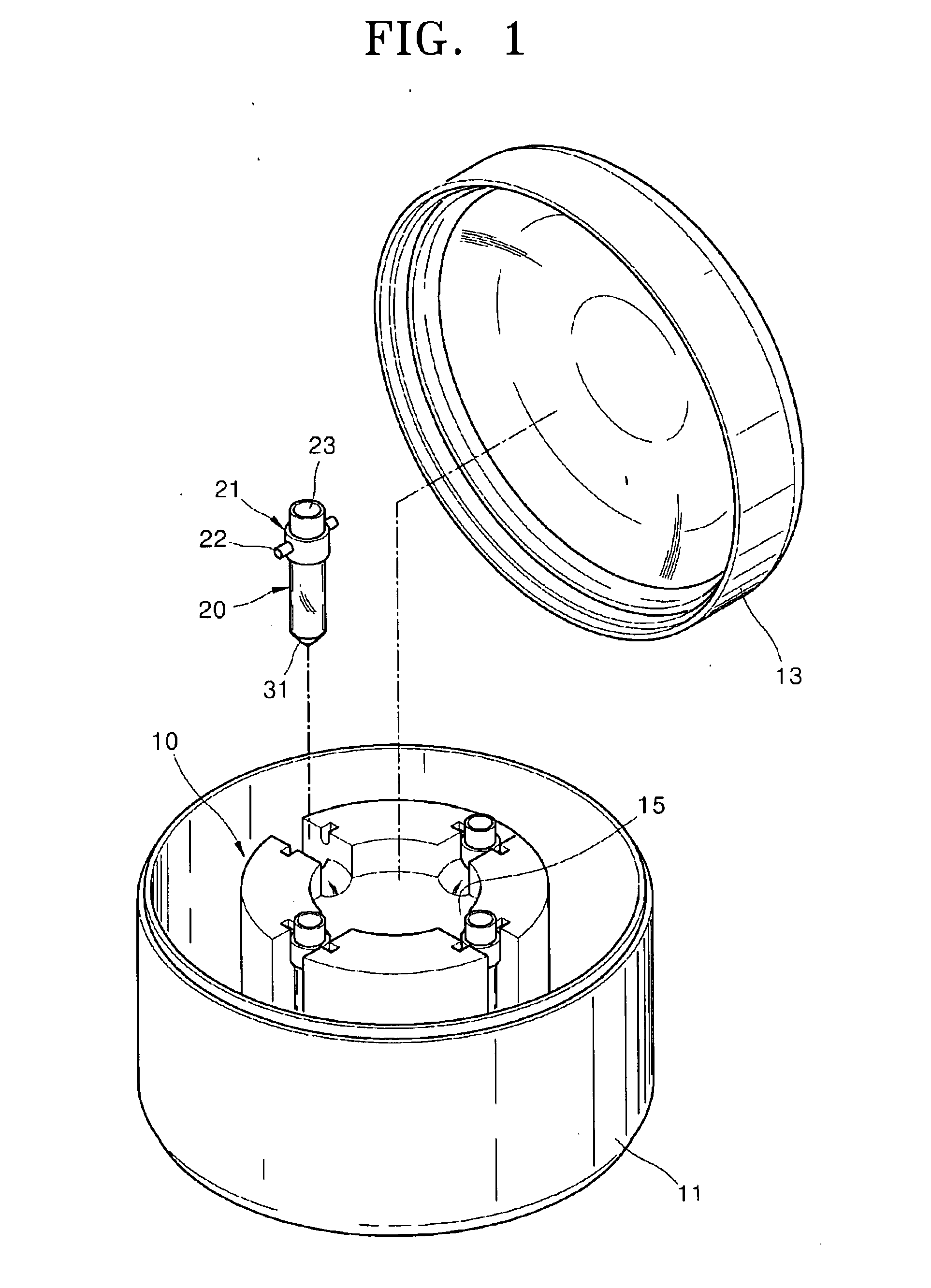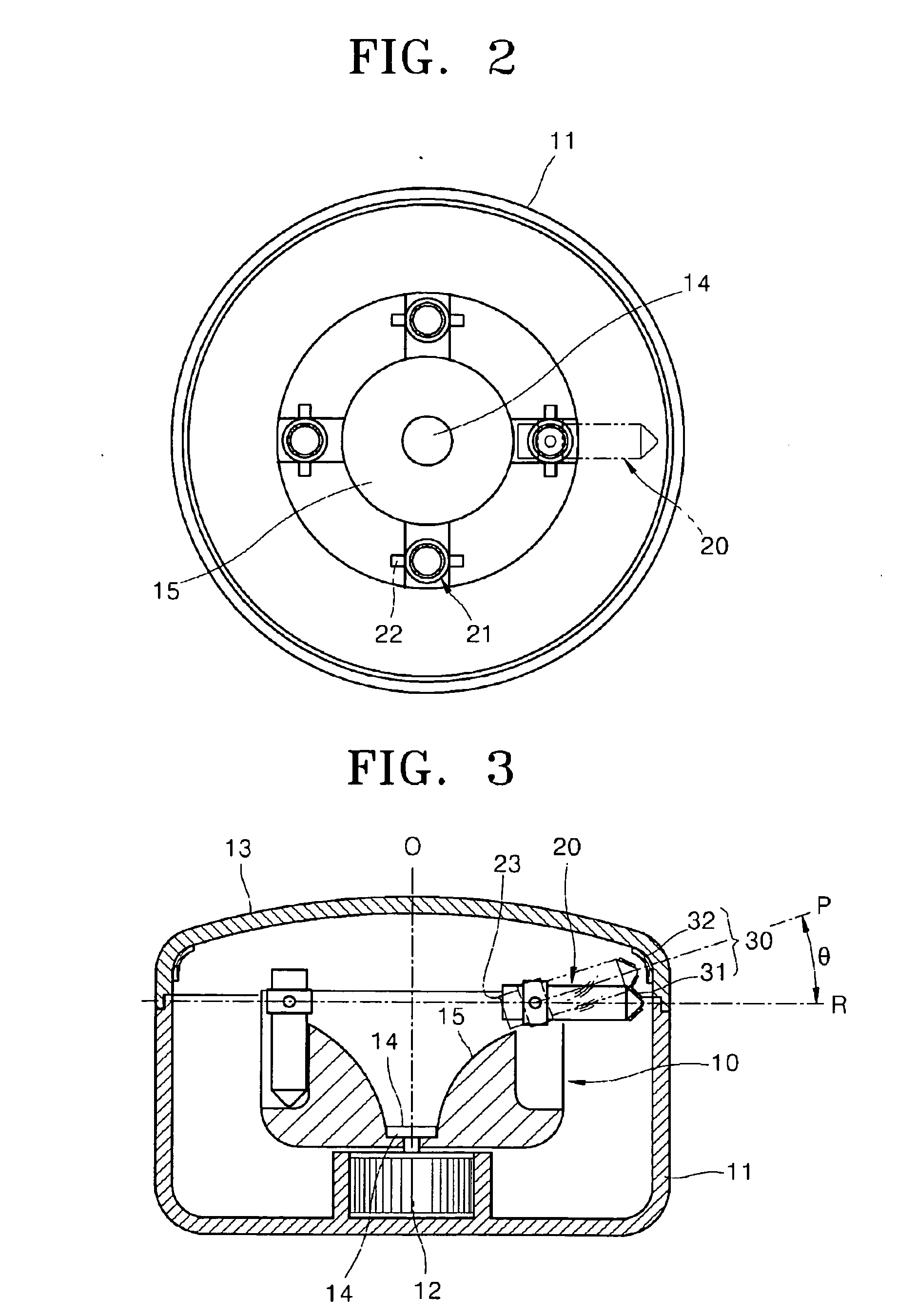Centrifuge and centrifuging method
a centrifugal and centrifugal technology, applied in centrifugal force sediment separation, centrifuges, separation processes, etc., can solve the problems of low purity of separated materials, difficult separation of layers, so as to facilitate the separation and separation of layers
- Summary
- Abstract
- Description
- Claims
- Application Information
AI Technical Summary
Benefits of technology
Problems solved by technology
Method used
Image
Examples
Embodiment Construction
[0045]The present invention will now be described more fully with reference to the accompanying drawings, in which exemplary embodiments of the invention are shown.
[0046]FIG. 1 is a perspective view of a centrifuge according to an embodiment of the present invention, FIG. 2 is a plan view of the centrifuge in FIG. 1, and FIG. 3 is a cross-sectional side view of the centrifuge in FIG. 1.
[0047]A centrifuge according to the embodiment illustrated in FIGS. 1 through 3 is an apparatus that spins about a rotation axis 14 to separate materials. The centrifuge of the present embodiment includes a rotor 10, a container 20 pivotably coupled to the rotor 10, and an angle adjuster 30 that adjusts the rotation angle of the container 20.
[0048]The rotor 10 rotates about the rotation axis 14, and supports the container 20. The rotor 10 is disposed within a casing 11, and is coupled to a drive motor 12 to rotate within the casing 11 and perform centrifugal separation. The centrifuge also includes a ...
PUM
| Property | Measurement | Unit |
|---|---|---|
| angle | aaaaa | aaaaa |
| angle | aaaaa | aaaaa |
| pivoting angle | aaaaa | aaaaa |
Abstract
Description
Claims
Application Information
 Login to View More
Login to View More - R&D
- Intellectual Property
- Life Sciences
- Materials
- Tech Scout
- Unparalleled Data Quality
- Higher Quality Content
- 60% Fewer Hallucinations
Browse by: Latest US Patents, China's latest patents, Technical Efficacy Thesaurus, Application Domain, Technology Topic, Popular Technical Reports.
© 2025 PatSnap. All rights reserved.Legal|Privacy policy|Modern Slavery Act Transparency Statement|Sitemap|About US| Contact US: help@patsnap.com



